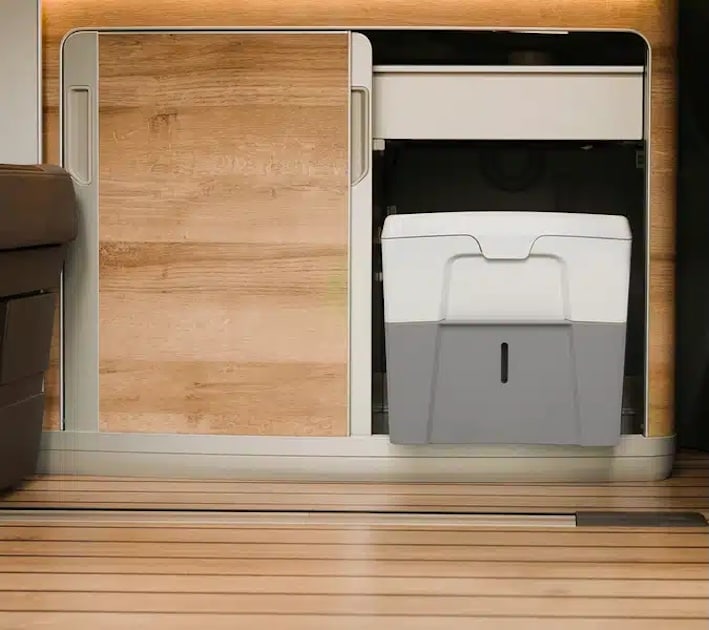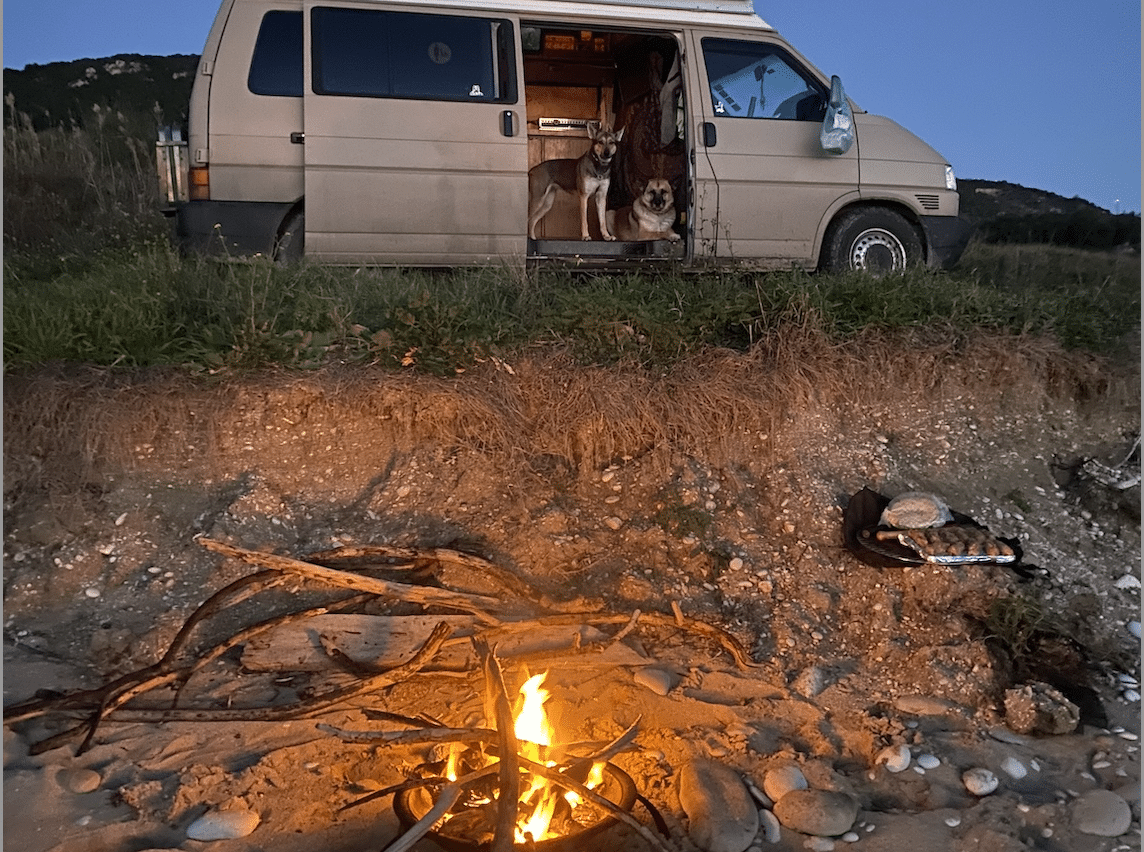Dry separating toilet in the camper: sustainable alternative with many advantages

Life in a campervan brings with it a high degree of freedom, mobility and closeness to nature. But when it comes to equipping a camper van, there is always the question: which toilet is best? A dry separation toilet has proven to be the ideal choice for many – especially for those who value environmental friendliness, independence and comfort. However, chemical toilets can also be a sensible option if they are operated with biodegradable agents.
In this blog article, we show you the advantages of the dry separation toilet and give you tips for the sustainable use of chemical toilets.
What is a dry separation toilet?
A dry separation toilet works without water and separates liquids from solids. This separation prevents unpleasant odors and makes disposal much easier. Solids can be dried using litter (e.g. coconut fibers or sawdust) and then composted or disposed of in the residual waste. Liquids end up in a separate container that can be emptied easily.
Advantages of the dry separation toilet
1. sustainability
As no chemicals or water are required, the dry separation toilet is a particularly environmentally friendly solution. It conserves valuable resources, especially on longer trips in the countryside.
2. independence
You are not reliant on disposal stations, which gives you more flexibility when choosing your campsite. Solid waste can be disposed of locally as long as the rules are followed.
3. odor neutrality
The separation of urine and solids prevents unpleasant odors. In addition, the use of bedding ensures natural odor absorption.
4. cost efficiency
There are hardly any running costs after purchase. All you need is bedding, which you can even make yourself from natural materials.
5. simple installation
A dry separation toilet requires neither a water connection nor complicated installations. This makes it the ideal choice for small campers or self-built vans.
Chemical toilet: practical and environmentally friendly with the right care
Chemical toilets are a tried and tested alternative for many campers. They offer the convenience of a “classic” toilet and are easy to use. If you decide to use a chemical toilet, there are still ways to keep the environmental impact to a minimum:
1. biological sanitary additives
Use biological additives that do not contain harmful chemicals. These agents promote natural decomposition and are harmless to both the environment and disposal stations.
2. correct disposal
Only empty your chemical toilet at designated disposal stations. This protects the environment and ensures that the contents can be recycled easily.
3. reduced water consumption
Many modern chemical toilets are designed to use a minimal amount of water. This saves resources and reduces the need for cleaning agents.
Which toilet is right for you?
The decision between a dry separation toilet and a chemical toilet depends on your personal needs and your travel behavior:
- If you value independence, sustainability and ease of use, the dry separation toilet is ideal.
- If you occasionally visit campsites with waste disposal stations and comfort is important to you, the chemical toilet is a practical choice – especially with biological additives.
Conclusion
Whether you choose a dry or chemical toilet: with the right choice and handling, you can equip your camper in an environmentally friendly way and use it comfortably. Dry separation toilets score points for sustainability, flexibility and odor neutrality, while chemical toilets with biological additives offer a convenient alternative.
So you can enjoy the freedom of camper life and protect nature at the same time – a win-win situation for you and the environment!
Here you can find the dry toilet https://campzilla-shop.com/produkt/trockentrenntoilette-wandago/




